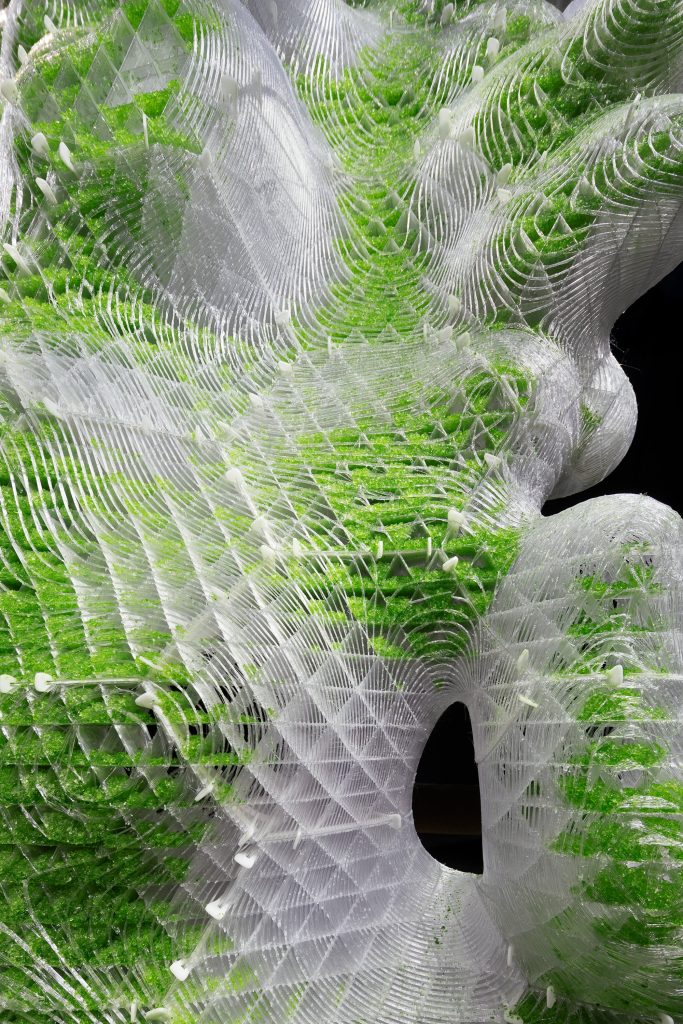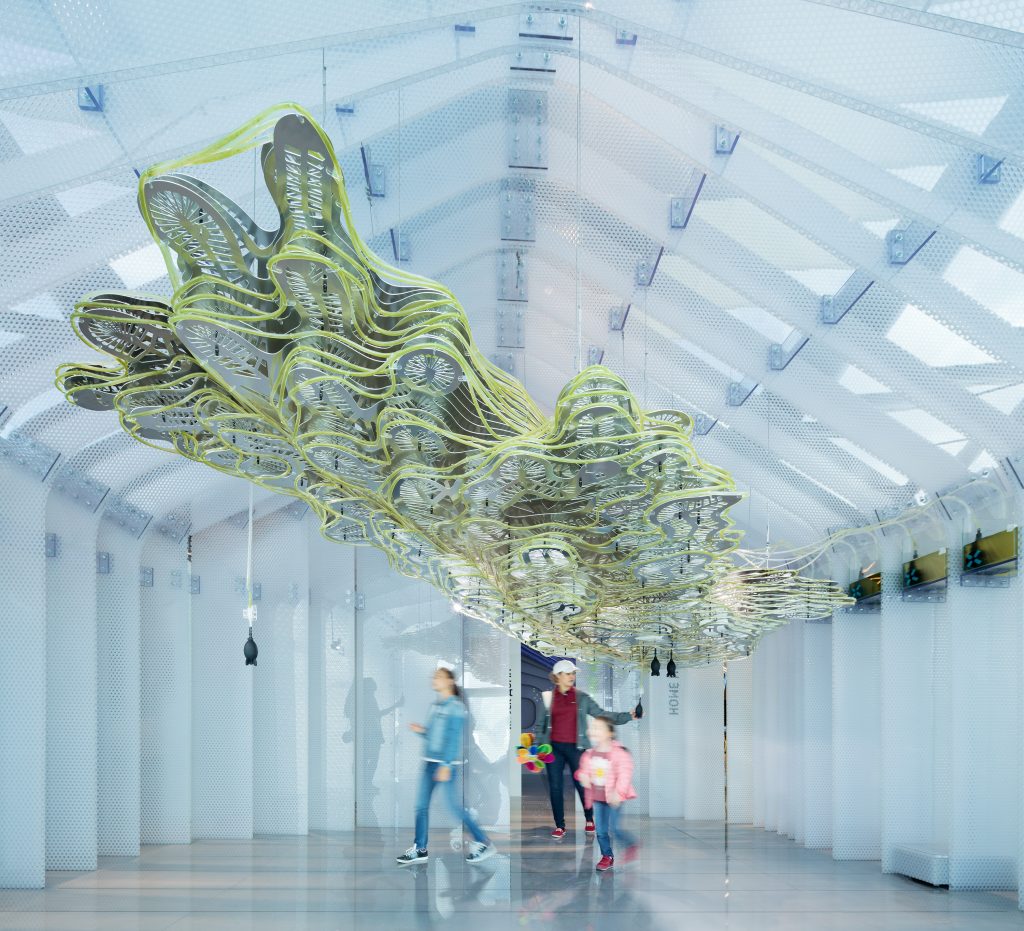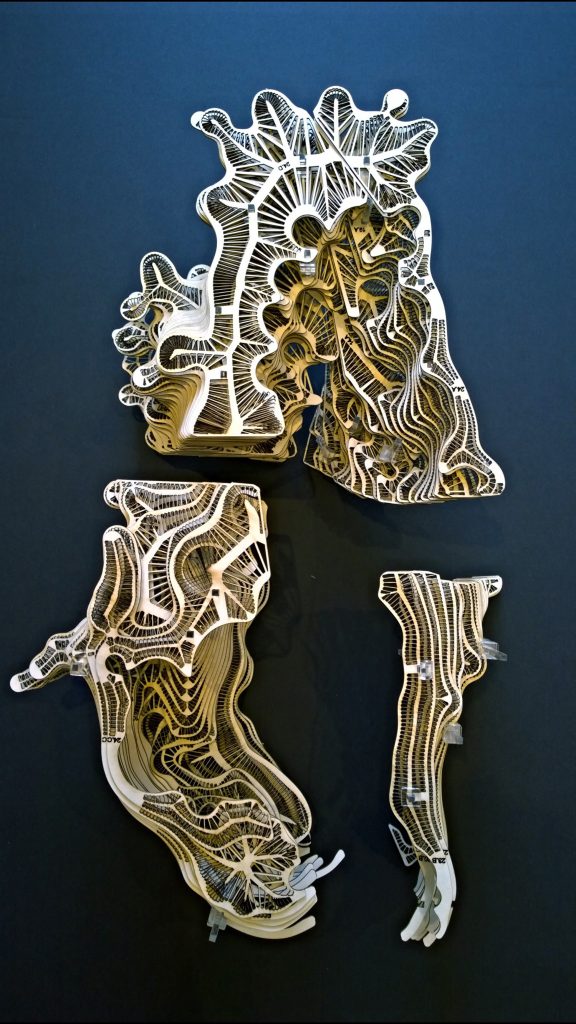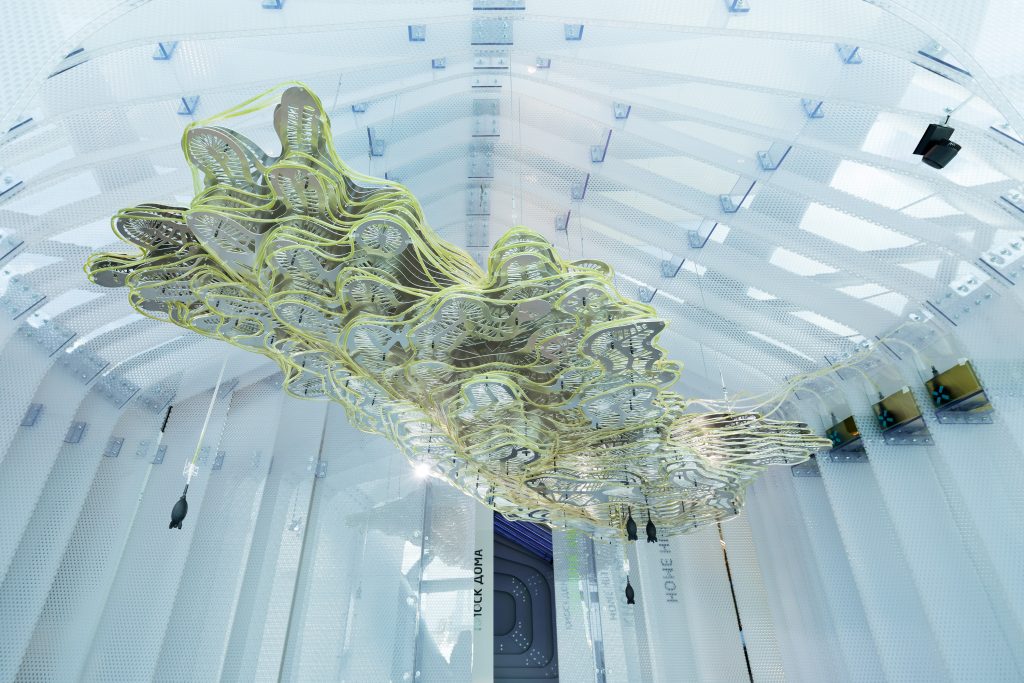Speaking with Claudia Pasquero, founder along with Marco Poletto of ecoLogic Studio, we listen to a vision of the world in which all “beings” could be in harmony with each other because they are able to find a balance. With the term “beings” ecoLogic Studio is absolutely not limited to human beings, but also includes plants, animals, insects and artificial identities such as androids in this group. Claudia Pasquero is not a science fiction writer, but a lecturer and university researcher who supports her vision with a solid scientific and philosophical foundation.
1. What is ecoLogic Studio about?
EcoLogic Studio deals with design innovation, integrating innovation from other disciplines into the world of architecture. ecoLogic Studio has close ties to the academy, I, myself hold an academic position at both the Bartlett School of Architecture UCL and the Innsbruck University. The studio’s name comes from the book “Steps to an Ecology of Mind” written by the anthropologist Gregory Bateson in 1972. Unlike what is often done, today we as Bateson do not limit ourselves to seeing ecology as a simple check-list with various tasks to be respected, but rather an “ecology of mind” and therefore a complex system made up of interactions between systems. These relationships are determined both by logical and meta-logical relationships. I will further explain these concepts during the interview.
2. I imagine the university has an important role in your work.
Yes, we consider it as part of our practice. We both did a basic PhD practice, a new form of research doctorate aimed at creating a connection between practice and research. Within this doctorate the two activities are mutually supportive and the knowledge is not just one directional, but two-way.
3. Do you have this kind of approach in both London and Innsbruck?
At the moment I have these two academic bases. In London I further develop the conceptual / philosophical framework and in the lab in Austria I develop the material systems.


4. What role can architecture play in the well-being of our planet?
I have a pretty mixed background: I first studied drama in Turin, followed by engineering at the Polytechnic of Turin and finally architecture at the Architectural Association School of Architecture in London. I make this premise to say that philosophically I don’t believe in net divisions. Today, often in the positivist view, human infrastructure has become a kind of urban sphere as opposed to the biosphere. Our planet’s climate change is seen as a consequence of this contrast. I would like to emphasise that the planet is constantly changing and we are realising it thanks to a system of technologies that were previously non-existent. In all of this one of the roles of architecture could be to stimulate people’s consciences in an aesthetic way regarding these themes. For example, we could build architecture that reproduces some natural processes like algae cultivation. This type of approach would make it possible to sensitise a large number of people through an aesthetic process instead of simply using data and graphics.
5. Can you explain this concept more broadly?
From modernism, among other things, we have inherited the idea of a sanitised architecture, the idea that bacteria is synonymous with dirt and altogether represents something negative. The master planning of the cities with respect to this concept works in zones, separating productive areas from residential ones. As a consequence the urban dweller has lost touch with the consciousness of all those material processes that create the city itself. Some philosophers, with what is called the dark side of ecology, have tried to provide alternatives to this vision and hypothesised to create connections between productive cycles and man. It is true that bacteria can be harmful, but every day scientists are discovering new ways to use them positively.
6. How do you imagine the city of the future?
A dynamic city in continuous change where material processes are displayed and places are shared naturally between human and non-human systems. Bacteria, robots and humans all become citizens.
It is a city where we create an alliance between different types of intelligence. Today we talk a lot about air pollution and how CO2 damages us because human beings need oxygen, but in a city of the future bacteria like algae could solve the problem because they breathe co2. Architecture can become the appropriate interface to allow this type of interaction. In your vision, man, bacteria and robots are not in opposition or competition. No. In this city the android does not replace, but is simply a “another being”. Scientists define this form of coexistence as collective intelligence, an intelligence that emerges from multiple units and is not centralised.
7. Do you have any authors of reference?
I can tell you mine. Marco would certainly mention others. The work of the anthropologist and cybernetician Gregory Bateson has been fundamental in my education. He expanded the cybernetic paradigm to the biological world through what he calls the formation of metalanguages. That is, the use of languages that doesn’t have to be necessarily logical. It can be, for example, aesthetics or even materials like those used by bacteria and plants. There are also current writers, like Timothy Morton, who talk about dark ecology.


8. Many politicians and sociologists fear the effects of some important inventions that are increasingly evolving on mass society. I refer in particular to the fear that robotics and artificial intelligence will render human work superfluous. What do you think?
This is the problem we talked about concerning ecology transposed into artificial intelligence. Today there is an idealisation of what artificial intelligence can do, but there is little integration within these systems. The question is how architecture will allow these multiform intelligence systems to interface.
9. Will men be increasingly connected to these systems to become one with all of this?
This is another question. Andy Clark argues that the way humans learn is cyborg. He says this not about technological grafts in the body, but about the way we think. To give you an example: to solve a multiplication of numbers with paper and pen we use the classic arithmetic calculation and this is a cybernetic system. The sheet pencil system becomes part of me as a cognitive system. In practice, the human being has the ability to evolve by interacting with tools. This co-evolutionary capacity of man could be improved if the individual were connected to architecture that integrates data systems and bacteria growth.
10. Can you talk about the project H.O.R.T.U.S. 2019?
H.O.R.T.U.S. was presented at the Pompidou Centre; it is an open system that interacts directly with the environment and allows for the production of oxygen thanks to the use of microalgae.
11. I imagine the algae will need a support structure …
It is a triple structure. The first is that of algae, then there is a second one in biogel that contains them and finally the 3D printed one.
12. What is biogel?
There are various types of biogels and in this case it is printed. Algae produce biogel when they are out of the water. To explain, it is the sticky patina that we see on the stones on the shoreline and is used by algae to survive. Scientists have started producing artificial biogel to decrease the amount of water needed for algae cultivation and to allow their use in other contexts such as architecture.


13. In the Photo.Synth.Etica project we talk about architectural leather. How is it used in practice?
It could be used as a 3D printed facade. But the long-term idea is to build an entire building using this technique. As of today, H.O.R.T.U.S. are permanent sculptures that are to be inserted in public spaces that allow for the production of proteins and oxygen and to raise people’s awareness of these issues.
14. Can you tell us about the H.O.R.T.U.S. project for EXPO 2017 in Astana 2017?
H.O.R.T.U.S. for EXPO 2017 in Astana it is part of the BIO.tech HUT, our first permanent all-synthetic architecture, and simulates a 180 m2 apartment that produces enough energy for a family of four. It also produces enough protein to meet the needs of 12 people and absorbs an amount of co2 equivalent to 32 trees. The algae are grown inside these tubes that we can see and every two weeks it is harvested. Within the BIO.tech HUT there were various areas, such as that of the garden, that of science and finally the area where one of our sculptures was present, which is precisely H.O.R.T.U.S. The morphology of H.O.R.T.U.S. is derived from diagrams produced by measuring user movements. Users can pump co2 into H.O.R.T.U.S. and see the amount of oxygen that is produced.
15. You previously talked about protein production…
Yes, algae can have many applications. One of those most studied is for the production of biofuels, the production of energy through biomasses. The applications that for now appear to give the best results are the food industry and the pharmaceutical industry. Chlorella and spirulina are high in protein, a freeze-dried teaspoon is the equivalent of a Florentine steak.











































